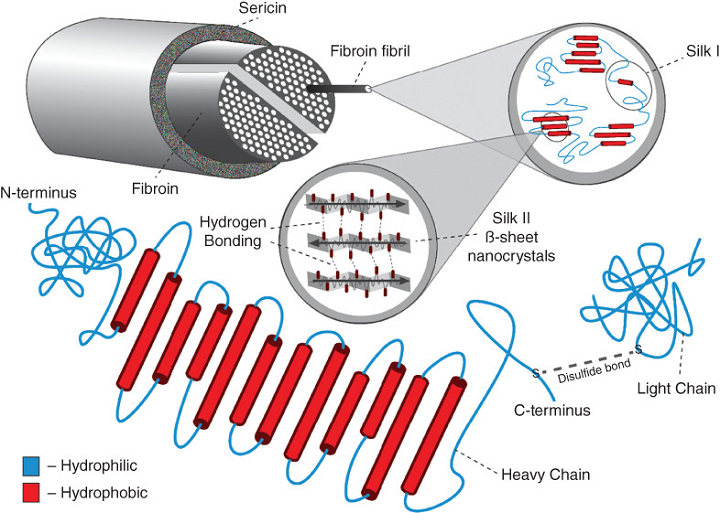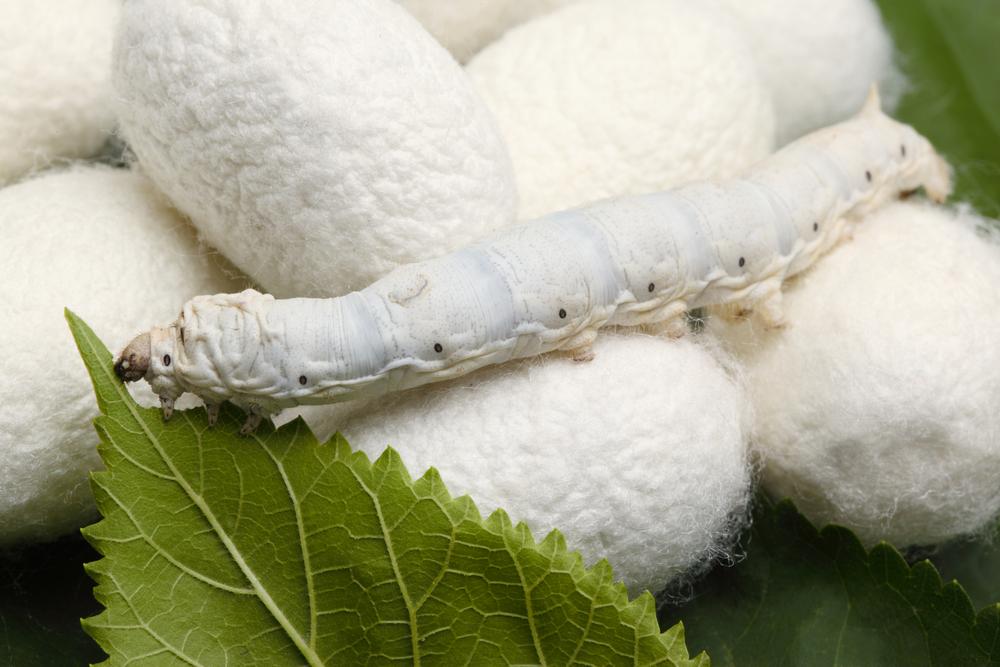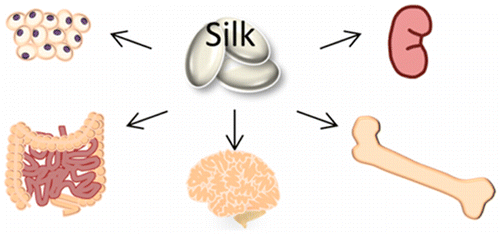Silk isn’t just used to make gorgeous, expensive clothing—this biocompatible, natural protein fiber is much stronger than it looks. The protein is made of 75% biocompatible fibroin, and 3D printed silk has many applications in the medical sector. The Abbott Lab at Carnegie Mellon University (CMU), run by biomedical engineering professor Rosalyn Abbott, works with regenerative medicine and materials science, investigating how tissue development and disease are affected by the 3D microenvironment and studying topics like adipose tissue engineering strategies and non-invasive tissue assessments…and silk biomaterials.
CMU undergraduate student Tahlia Altgold said, “Silk is a really incredible biomedical material that’s been used for a long time in things like sutures.”
Altgold is a junior at the university, majoring in both materials science and biomedical engineering, and is a researcher in the Abbott Lab working to develop a new 3D printing technique for bioengineering tissue scaffolding out of silk, which she explains is “very biocompatible.” Professor Abbott and other researchers in the lab are focused on using silk to create a scaffold that can support cells as they grow for tissue engineering purposes.
This isn’t the first time we’ve seen 3D printed silk scaffolds created in a lab, but Altgold and her mentor Claude King III, a PhD candidate in biomechanical engineering, are working on a way to do so without having to combine the material with other ones that could potentially cause issues. This would be a major boon for the field of regenerative medicine, which is Altgold’s specific focus in the lab.
“We’re trying to find the exact right pretreatment method for pushing the solution through the nozzle in the 3D printer so it will hold its shape after printing. Combining this method with Abbott’s expertise in biomaterials has made the whole project feel in-house, totally CMU,” Altgold explained, referencing the work that the university’s Feinberg Group completed, resulting in 3D printable material in gel form.
Before silk can be used as a cell scaffold for regenerating tissues, the raw material must be processed, and Professor Abbott explained that silk is not the easiest to work with at the cellular level, as the proteins have to be forced into holding the final 3D printed shape, such as an ear drum.
The abstract of another research paper authored by some of the Abbott Lab researchers states, “While bulk properties of silk have been widely explored, focusing on microscopic features is becoming increasingly important, as modifications at this scale largely affect the resulting regenerative properties of the biomaterial. Structural changes caused by the silk source, extraction, and processing should be carefully considered, as they will affect the biocompatibility and degradability of silk fibroin.”
Silkworms are used in many of the Abbott Lab’s research projects, and to prepare them for this important work, Altgold cuts up the discarded cocoons, then boils them in a sodium bicarbonate solution, separating out the specific proteins that are needed to 3D print scaffolds for new tissues.
“For sustainable (long-term) cultures, 3-D silk protein scaffolds provide biocompatibility, porous features for transport, robust yet tunable mechanical properties, retain size and open porous structures for extended time frames due to slow proteolytic biodegradation, avoid specific cell signaling, and require no chemical cross-linking. Silk degradation can be extended for months to years without premature collapse of structures (that would result in necrosis) to support cell interactions during slow remodeling toward native tissue. Silk can also be fabricated into different material formats, such as hydrogels, tubes, sponges, composites, fibers, microspheres, and thin films, providing versatile platforms and interfaces for a variety of different applications. For sustainable tissue engineering applications, many formats have been used, including silk ionmer hydrogels that have been cultured for up to 8 weeks and porous silk scaffolds that have been cultured for up to 6 months,” the Abbott Lab researchers wrote in another research paper focused on 3D printing silk.
Due to COVID-19, the Abbott Lab was closed for a brief period of time, so Altgold continued her research remotely, preparing the team’s current articles for publication and reading other published literature on silk biomaterials. But now that the lab is open again, running with modifications as part of CMU’s phased re-opening, her in-person working with 3D printing silk scaffolds can continue.
“The work now is to prove our concept and refine the methodology we’re working on. Dr. Abbott’s lab does exactly the kind of work I want to pursue. I’m so interested in tissue engineering and using different cells through a materials science lens,” said Altgold, who received funding to work in the Abbott Lab from CMU’s Undergraduate Research Office in the form of a Summer Undergraduate Research Fellowship (SURF).

Silk’s highly tunable range of mechanical properties, degradation rates, and material formats arise from subtle changes at the microscopic level.
(Source: Carnegie Mellon University)
Subscribe to Our Email Newsletter
Stay up-to-date on all the latest news from the 3D printing industry and receive information and offers from third party vendors.
You May Also Like
3D Printing Financials: Fathom Struggles in Financial Quicksand During Critical Transition
Facing a year of key transitions and financial pressures, Fathom (Nasdaq: FTHM) has filed its annual report for 2023 with the U.S. Securities and Exchange Commission (SEC). The document outlines...
Latest Earnings Overview for Australian 3D Printing Firms Titomic and AML3D
Australian 3D printing manufacturing firms Titomic (ASX: TTT) and AML3D (ASX: AL3) reported their financial results for the period from July to December 2023, marking the first half of their...
3D Printing Webinar and Event Roundup: April 7, 2024
Webinars and events in the 3D printing industry are picking back up this week! Sea-Air-Space is coming to Maryland, and SAE International is sponsoring a 3D Systems webinar about 3D...
3D Printing Financials: Unpacking Farsoon and BLT’s 2023 Performance
In the Chinese 3D printing industry, two companies, Farsoon (SHA: 688433) and Bright Laser Technologies, or BLT (SHA: 688333), have recently unveiled their full-year earnings for 2023. Farsoon reported increases...


































